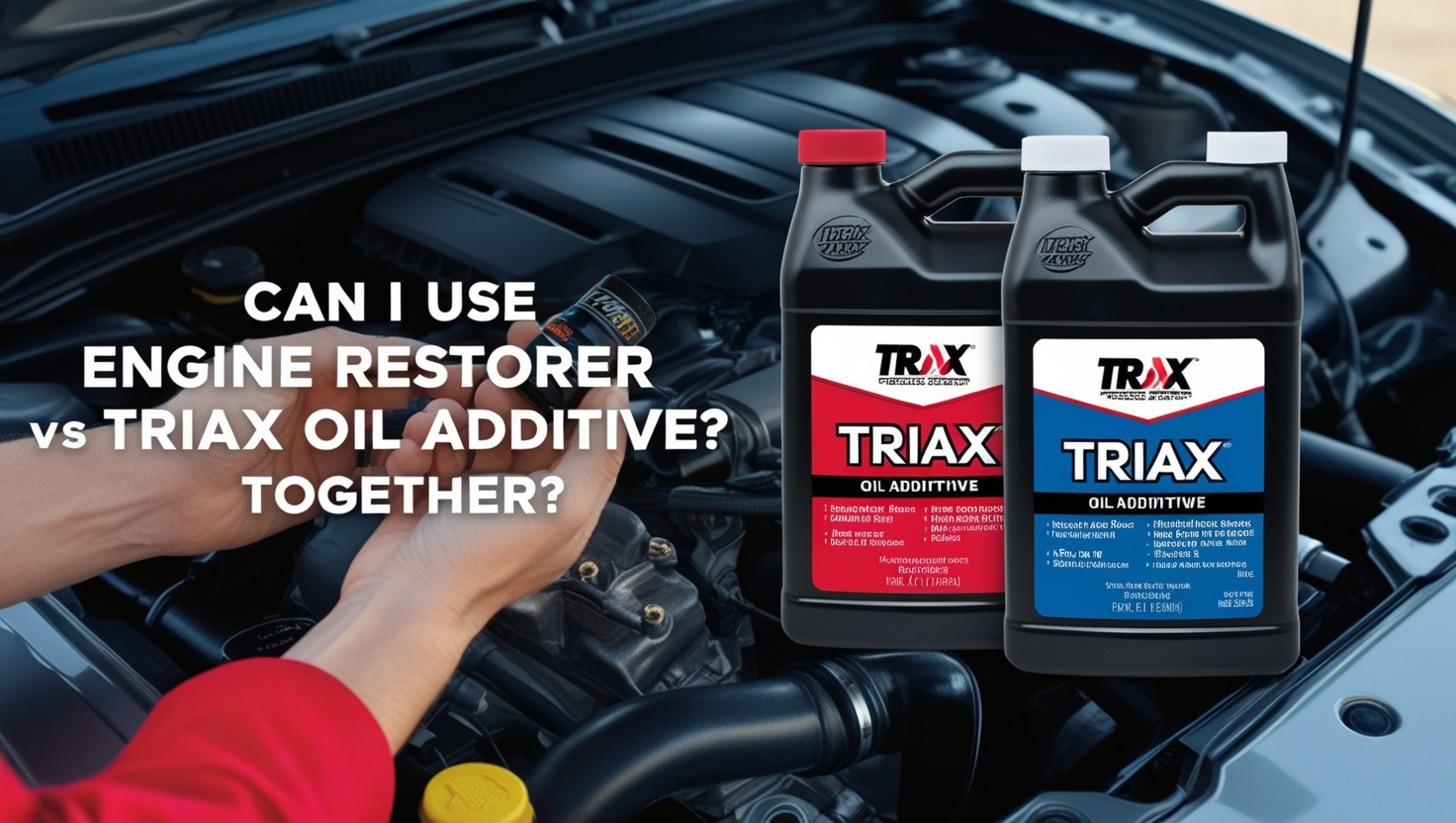
Car maintenance is crucial to ensure a long-lasting, smooth-running engine. You may have heard about oil additives and engine restorers, which are popular solutions for improving engine performance. If you’re wondering if can I use engine restorer and Triax oil additive together, you’re not alone. Many drivers seek to boost engine health and performance, and understanding how these products interact is essential.
In this article, we’ll investigate whether you can safely and effectively use these two products and the benefits they offer for your vehicle.
What Is an Engine Restorer?
Before answering the question, can I use engine restorer and Triax oil additive together?” Let’s first understand what an engine restorer does. Engine restorers are designed to improve engine performance by repairing worn-out metal surfaces. Over time, metal wear causes compression loss, leading to reduced performance and fuel efficiency. Engine restorers fill these gaps, creating a smooth surface that restores compression and improves overall performance.
Read more: Ways to Break Swade Savage Worlds Munchkin
What Is Triax Oil Additive?
Now, let’s explore what Triax oil additive does before we answer the question of whether I can use engine restorer and Triax oil additive together. Triax oil additives are known for their ability to enhance lubrication, reduce friction, and protect the engine from wear. They are designed to prolong the life of your engine oil, improve fuel economy, and offer added protection in extreme conditions. Triax oil additives also contain detergents that help clean the engine, reducing carbon deposits and sludge buildup.
Can I Use Engine Restorer and Triax Oil Additive Together?
Now, the big question is—can I use engine restorer and Triax oil additive together? The short answer is yes but with some considerations. Both products are formulated to improve engine health, but they work differently. Engine restorers target metal surfaces, while Triax oil additives focus on lubrication and protection. When used together, they can complement each other by addressing different aspects of engine maintenance.
However, following the manufacturer’s guidelines for both products is essential. Overusing additives can sometimes lead to unintended consequences, such as oil thickening or reduced efficiency. Ensure the chosen additives are compatible with your engine type and oil requirements.
Benefits of Using Triax Oil Additive and Engine Restorer Together
Now that we know the answer to can I use engine restorer and Triax oil additive together, let’s explore the benefits of combining these products:
1. Improved Engine Performance
By using both products together, you can improve your engine’s performance. The engine restorer helps restore compression, improving acceleration and fuel efficiency. At the same time, the Triax oil additive ensures that the engine is well-lubricated, reducing friction and wear. This combination can result in smoother operation and a longer engine lifespan.
2. Better Fuel Economy
When you wonder, “Can I use engine restorer and Triax oil additive together?” Consider the potential improvement in fuel economy. Restoring engine compression and reducing friction with these two products can make your engine run more efficiently, leading to better fuel economy and savings at the gas pump.
3. Enhanced Engine Protection
Both engine restorers and Triax oil additives offer protection for your engine. While the engine restorer works to repair internal damage, the Triax oil additive provides a protective coating that reduces wear and tear. This can be particularly beneficial for older engines starting to show signs of wear.
4. Reduced Engine Wear
If you’ve asked yourself, can I use engine restorer and Triax oil additive together, it’s likely because you’re looking to reduce engine wear. Combining these two products can significantly reduce wear on metal surfaces and improve the engine’s overall condition. Your car may last longer and require fewer maintenance as a result.
5. Cleaner Engine
Triax oil additives contain detergents that help clean the engine by breaking down sludge and carbon deposits. This can significantly complement the engine restorer, which focuses on repairing wear. Using both together can lead to a cleaner, more efficient engine free of buildup that can affect performance.
How to Combine Triax Oil Additive with Engine Restorer
Now that you have the answer to can I use engine restorer and Triax oil additive together, it’s essential to know how to use them correctly. Here are some tips to help you get the most out of these products:
1. Follow Manufacturer Guidelines
Always read the instructions on the engine restorer and Triax oil additive before use. Ensure that they are suitable for your engine type and oil requirements. Overusing these products can lead to issues like oil thickening and reduced engine efficiency.
2. Use the Right Amount
When using an engine restorer and Triax oil additive together, it’s crucial to use the recommended amount for each product. Adding too much can overwhelm the engine and potentially cause damage. Stick to the manufacturer’s guidelines for the best results.
3. Monitor Engine Performance
After using both products, keep an eye on your engine’s performance. You should notice improvements in compression, fuel efficiency, and overall smoothness. If any issues arise, consult a mechanic to ensure the products work as expected.
Conclusion:
In conclusion, the answer to can I use engine restorer and Triax oil additive together is yes, with careful consideration. Both products can improve engine performance, reduce wear, and enhance protection. You can enjoy the benefits of a well-maintained, long-lasting engine following manufacturer guidelines and using the correct amounts.
Whether you’re driving an older vehicle that needs extra care or simply want to optimize your engine’s performance, using engine restorer and Triax oil additive together can be a great solution. Always ensure your engine is compatible with these products, and enjoy the improved performance and fuel savings of proper maintenance.


